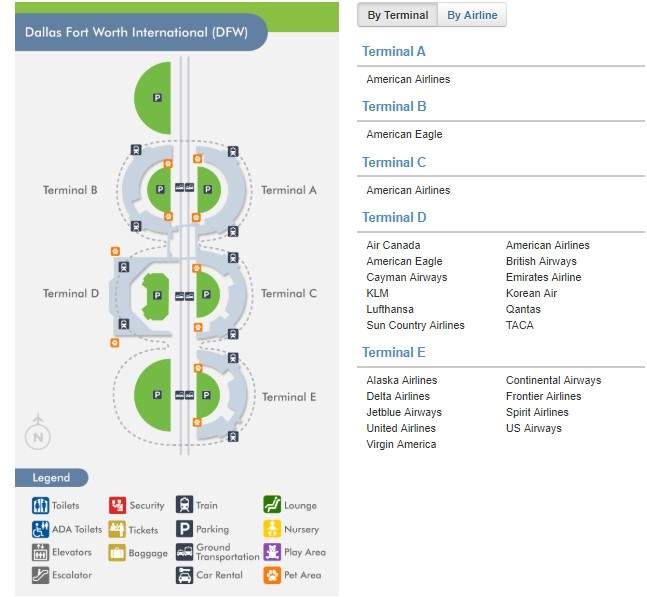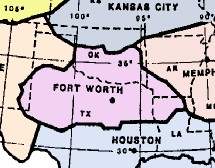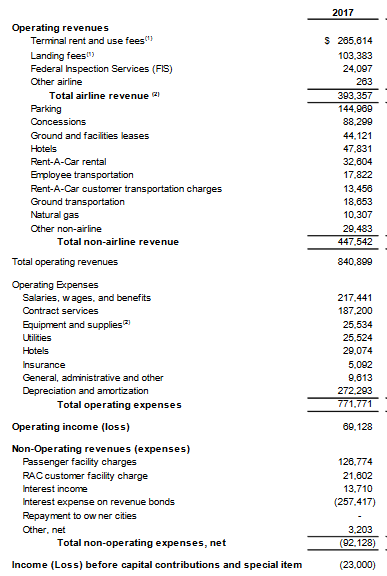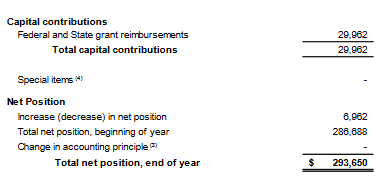An Airport Management Report
| ✅ Paper Type: Free Essay | ✅ Subject: Management |
| ✅ Wordcount: 3655 words | ✅ Published: 23 Sep 2019 |
An Airport Management Report
Abstract
There are many aspects that come with the operation of an airport like Dallas-Fort Worth International Airport. The board of directors must consider operational systems, airside and landside operations, landside movement, and the function of the airport as it supports the local community. Operational, environmental and political factors must be debated to discern publicly acceptable local solutions. This paper will also discuss the steps taken in planning and budgeting, including regulatory guidelines as a factor in the decisions made concerning the airport. A perspective will be provided in the utilization of the space and area surrounding the airport as they act as ambassadors for the local area to local and international visitors arriving or departing from the growing airport.
Airport Management Report
Introduction
Dallas-Fort Worth International Airport, commonly referred to as DFW, as listed in the FAA “National Airport System Plan (NASP)” (Young & Wells, 2011, p. 10) list, has been chosen for this research project impart due to its rich history. According to the FAA “National Plan of Integrated Airport Systems (NPIAS)” (Young & Wells, 2011, p. 3) from 2011-2015, this airport is classified as a large major and primary hub airport for commercial operations as seen on table 1. This classification comes from FAA Order 5090.3: Field Formulation of the National Plan of Integrated Airport Systems (NPIAS). Dallas-Fort Worth International (KDFW) is a federally regulated and locally run airport in Dallas, Texas, approximately three hours east of the town of Abilene where I live with a localizer ID of DFW.
As of 2015, there had been over twenty-seven million passengers enplaned and flown out commercially to other locations. DFW also met the classification of a publicly owned airport, with scheduled air carrier service. In addition, it had more than $2500 annual revenue as a primary commercial service airport having 10,001 or more enplanements. DFW, the fourth busiest airport in the world, operates under the direction of Mr. Sean Donohue, Chief Executive Officer of Dallas-Fort Worth (DFW) International Airport. The “Airport Improvement Plan (AIP)” allows for a development cost of over three billion dollars in expected updates and renovations to improve the airport and the facilities.
History
In 1974 Dallas-Fort Worth International Airport opened its doors and has since grown to be the fourth largest airport in the US, and the eleventh globally by passenger traffic. It continues to play a major part in serving the local community. Dallas-Fort Worth International Airport currently operates one fixed based operator (FBO) and serves twenty-seven airlines. DFW is also home to approximately 1900 Airport Board Employees and 60,000 on-airport employees, creating 228,000 full-time jobs with a payroll of $12.5 billion. Flights operate to 244 total destinations on five continents, and of those 182 operate domestically and 62 operate internationally.
The Dallas-Fort Worth International Airport covers more than 26.9 square miles in area, but its real property only consists of 12,207 acres of land. The seven operational runways and all the connecting taxiways between the terminal area and the active runways take up the remaining area beyond the real property. 165 gates are presently available for passenger embarkation. Since its inception, DFW has grown in world rankings to being twelfth in terms of passenger embarkations. This active area allows DFW to operate 264 VFR operations per hour.
As neither Dallas or Forth Worth could decide on the location or had the area to house the massive Dallas-Fort Worth International Airport after much deliberation between the cities it now sits in an area between the two cities. Neither city would realize the amount of traffic the airport would create or the amount of possible revenue it would generate at the time of inception. DFW not only served to connect the two cities of Fort Worth and Dallas together but serves to connect the US to many other nations. While the physical address for the airport is listed as Dallas, the airport is outside of both Fort Worth and Dallas city limits. Dallas-Fort Worth International Airport is home to American Airlines and the One World Alliance.
Airport Airside
As defined by Young and Wells, the airports “airfield component includes all the facilities located on the physical property of the airport to facilitate aircraft operations” (Young & Wells, 2011, p. 102), this also includes the airspace surrounding the airport. The airside of the airport can be even further broken down into the “movement area and the nonmovement area” (Young & Wells, 2011, p. 104). The airside consists of the apron-gate area, the taxiway system, holding bay, holding area, runways, and the exit taxiways before moving out into the terminal airspace surrounding the airport. Dallas Fort-Worth International Airport has 165 different gates for the 27 different passenger airlines, and seven total runways connected by a massive chain of taxiways and the ramp containing the five different terminals seen in Figure 1.
Three air traffic control towers facilitate the movement of aircraft from the ramp to the taxiways, and finally to the seven runways. These towers oversee every vehicle that requires movement or positioning on the airfield. Movement is made safer with a new system that is only operational in about thirty-five major airports called the “Airport Surface Detection Equipment, Model X (ASDE-X)” (Federal Aviation Administration, 2014) system. This new system “alerts air traffic controllers of potential runway conflicts by providing detailed coverage of movement on the runways and taxiways” (Federal Aviation Administration, 2014). This system allows controllers to view movement “on a color display depicting aircraft and vehicle positions as an icon overlaid on a map of the airport’s runway/taxiways and airport approach corridors” (Federal Aviation Administration, 2014). It provides a means of having a greater situational awareness, especially in periods of inclement weather or periods of low visibility. It also provides a more efficient way to track movement at night when it is more challenging to see.
Class “B” airspace surrounds the airport 50 to 60 miles in all directions from the surface, up to 17,000 feet AGL. This is a complicated, complex, high volume airspace that presents unique and complex arrivals and departures within this surrounding airspace. DFW TRACON controls the area outside of the immediate Class “B” airspace of 50 to 60 miles, as far west as Midland Texas, as far north as parts of Oklahoma, as far east as parts of Louisiana and Arkansas and finally, as far south as near Houston as seen in the figure number 3.
Airport Landside
DFW is situated on the international parkway between highways 360, 161, 114, and 183. DFW has five “multiple-unit curvilinear terminal concept” (Young & Wells, 2011, pp. 238, Fig 7-5) terminals that service the large number of airlines that operate out of Dallas Fort-Worth International Airport. The five terminals are linked utilizing the Skylink high-speed train, which is a fast and efficient way to move between the five terminals. These five terminals allow DFW to better handle “large percentages of transfer passengers” (Young & Wells, 2011, pp. 238, Fig 7-5). Numerous shops, restaurants, and various member-elite and non-member services offer concessions and “benefits to the passengers” (Young & Wells, 2011, p. 260) transferring between flights or simply waiting for their departure. Many shops have qualified under the “Disadvantaged Business Enterprise” (Young & Wells, 2011, p. 260) and receive assistance and reduced rent from the Dallas-Fort Worth International Airport DBE Board of Directors “as part of its concessions program” (Young & Wells, 2011, p. 260). This is program is overseen and monitored by the board of directors, ensuring that they are in total compliance with the regulations of the program. Businesses found to be non-compliant with regulations are worked with to correct issues and to prevent fraudulent claims being filed.
“Valet Parking, Terminal Parking, Express Parking, and Remote Parking” offer parking from a few minutes to a few weeks’ time. Each of the five different terminals offers 24/7 valet parking, thus giving you a way to have your vehicle parked in a parking garage. Terminal parking is located at each of the 5 different terminals with more than 28,000 total available parking spaces. Entry into and exit from terminal parking can now be accomplished utilizing the tolltag program. Without a toll tag, you are required to take a ticket that will document how long you were parked to assist the airport in charging the correct parking fee. The next level is express parking where visitors may drop off their vehicles and then are shuttled to and from their terminals. There are two express parking zones for the airport, one on the north end of the airport property and the other on the south end of the airport property. Also located on the north and south ends of the airport are lots that are the most economical parking options for passengers and employees. To get from these remote parking lots, there are busses that shuttle passengers and employees to the terminals and workspaces. Rental car lots, taxi’s, public transportation, courtesy cars, shared rides, limousines, and charter buses are located near the airport to fulfill people’s needs.
The “Terminal Renewal and Improvement Program (TRIP)” (DFW Airport, 2018) costing around “$2.69 billion” (DFW Airport, 2018), began in February 2011, and makes some massive updates to better house their guests, businesses, and focusing on the gate system in “terminals A, B, and E” (DFW Airport, 2018). Their hope is to have these renovations completed by the end of this year (2018). The “enhanced concessions, expanded/reconfigured security checkpoints, enhanced self-service ticketing areas, improved parking and finally highly efficient green technology implementation” (DFW Airport, 2018) under contract from local companies being completed utilizing the Airport Improvement Program Funds that the FAA granted them. Dallas-Fort Worth International Airport is also host to two elegant and grand on-airport hotels: The Grand Hyatt DFW and the Hyatt Regency DFW. These provide many rooms giving guests a view of the terminal building and the taxiways and runways where the taxing, departing, and arriving aircraft can be viewed, like those operating under the license of Air Canada and American Airlines.
Found also in the landside are the many baggage claim areas. These areas service arriving airline passengers or passengers switching airlines at Dallas-Fort Worth. Terminal Link provides transportation to passengers picking up their bag who need to move to a different terminal. These passengers then once again check-in with their respective airline and have their bags checked if needed. Transportation, like the skylink or the terminal link, are offered free of charge to passengers arriving or departing through Dallas-Fort Worth International Airport. Being centrally located between the cities of Dallas and Fort Worth and about 25 miles northwest of downtown Dallas provides the clear operational area with runways remaining clear of any major obstructions.
DFW Founders Plaza, which is outside the airport to the north situated near 36L/18R, gives opportunities to those individuals wishing to view arriving and departing aircraft. Air traffic control transmissions are piped into speakers near some of the sitting areas. Visitors hear aircraft transmissions of arriving and departing aircraft. Being located so close to the active runways requires that this the area be monitored closely by security.
Airport Security Program
The Dallas-Fort Worth security program works to address 49 U.S. Code, Title 14, CFR Part 139, Certification of Airports; and, FAA Advisory Circular (AC) 150/5210-20A Ground Vehicle Operations on Airports inside and outside the airport. The Air Operations Area (AOA) of the airport is divided into two areas, the “Aircraft Movement Area (AMA), commonly referred to as simply the movement area” (DFW Airport, 2018) and “the Non-Movement Area” (DFW Airport, 2018). Aircraft make their transition to and from a flight on the runways and taxiways all in the aircraft movement area beyond the non-movement area boundary. DFW airport provides a free training program and certification program to employees and others that require access to the AMA and non-movement areas. The DFW Airport Driver Certification office also works “closely with the ACO (Access Control Office) for certain driver requirements,” (DFW Airport, 2018) but they are “not part of the process for obtaining” (DFW Airport, 2018) their SIDA badges for these individuals.
Employees require a Secure Identification Display Area (SIDA) badge for access to the sterile areas of the airport and must submit to screening by either the Transportation Security Administration (TSA) or the privately contracted screeners. The “SIDA badge applicants must be 18 years of age or older” (DFW Airport, 2018) as required by FAA regulations. Those that are employee/contractors that do not require access secure areas need only qualify for a Non-SIDA badge. These individuals must be 15 years of age or older. The authorized employer representative (AER) will begin the process for those that need to receive a badge from the airport. SIDA badges provide distinct levels of secure access to the person wearing the badge. These secured areas are “defined as a portion of an airport, specified in the airport security program, in which certain security measures specified in 40 CFR Part 1542 – Airport Security is carried out” (Young & Wells, 2011, p. 295), or simply to the sterile area. “The sterile area is defined as a portion of the airport defined in the airport security programs that provides passengers access to boarding aircraft and to which the access generally is controlled by TSA” (Young & Wells, 2011, p. 295).
The DFW Airport takes being safe and secure as a critical element and therefore they have steps to “elevate safe and secure to a key result” (DFW Airport Board of Directors, 2015) and made it the “foundation and basis for everything” (DFW Airport Board of Directors, 2015) they do. They have taken the steps of not just having excellent police, fire and security services but the whole program “encompasses emergency and pandemic preparedness, business continuity and resiliency through and after an event or crisis, risk management, employee, passenger, and contractor safety, and information systems security and disaster recovery” (DFW Airport Board of Directors, 2015). They have put into place plans for strengthening the entire DFW culture that promotes people proactively taking steps to protect the people, systems and the infrastructure that has been created at DFW.
Systems are also in place for handling pilots and crew members going through security at DFW, under their “known crew member” system, as it provides a way to check each crew member who needs access for flight or flight duties processed currently through five specified checkpoints, one in each of the five terminals within DFW. In terminal A, the checkpoint is “located between fire door near checkpoint A12” (DFW) and is open between the hours of “0430-2100” (DFW). At terminal B, the checkpoint is at “B30 co-located with B30 checkpoint” (DFW) and operates between the hours of “0430-1900” (DFW). The checkpoint for known crew members in Terminal C is at “C17 checkpoint adjacent to lane 1” (DFW) and operates from “0315-2100” (DFW). Moving over to Terminal D, the crew checkpoint is “adjacent to D22 checkpoint” (DFW) and this checkpoint operates between “0500-2100” (DFW). Finally, the last known crewmember checkpoint in Terminal E is “between E16/E17 on the upper level” (DFW), and is operational between “0400-1900” (DFW). These steps have allowed and given DFW Airport a strong security program, as they have worked to continue to address 49 CFR Part 139 requirements issued and maintained by the FAA.
Budget and Finances
Dallas-Fort Worth International Airports’ economic management covers all the various aspects that fall within the operating expenses, as with every airport. DFW’s “Executive Vice President Chief Financial Officer Christopher A. Poinsatte” (DFW Airport, 2018), appointed to the position in September 2003, oversees all operating and budgeting expenses since he is “responsible for business and financial planning, budgeting, accounting, information systems, debt financing, treasury and federal funding” (DFW Airport, 2018). Most of DFW’s expenses fall within “two types: capital improvement expenses and operation and maintenance (O&M) costs” (Young & Wells, 2011, p. 321). These are dependent on a number of factors “including the airport’s geographic location, organizational setup, and financial structure” (Young & Wells, 2011, p. 321). DFW Board members approve written request changes to the budget dependent on operational needs and commitments. DFW’s budget is “commonly referred to as the 102-operating fund” (DFW Airport, 2018), currently found in figure 5 and 6 below. This is supplemented by the AIP funds for upgrades to the airport and facilities. The “cash flows” (Miller-Nobles, Mattison, & Matsumura, 2018, p. 22) statement presents the operating revenue, operating expenses, and the AIP funds, and in this case, shows a profit for 2017. A budget change occurred between 2016 and 2017, shown as an increase in profit of almost seven thousand dollars. The 2017 revenue of $840,899 came from two primary sources, airlines and non-airline revenue. Operating expenses for DFW as part of their yearly operations resulted in $771,771. When revenue funds are greater than operating expenses, there is a profit for DFW at the end of the budgetary year.
Economic, Political, and Social Role
Airports play a “considerable role in economic development, and the most important cargo they move is people” (Florida, 2012). Dallas-Fort Worth (DFW) places “a high priority on improving the quality of life for the community” and as an airport is “proud of its role as the economic engine of North Texas and of its ongoing efforts to lead a wide variety of initiatives that impact the surrounding region” (DFW Airport, 2018). The DFW airport takes a three-prong approach to the connection with the community. They do so with a community outreach program, supplier diversity, and noise mitigation. DFW airport provides “a major part of a country’s infrastructure and fosters economic activities by encouraging international commerce and tourism and generating employment” (economywatch, 2010). DFW airport has “become vital to the growth of businesses and industry in a community” (Young & Wells, 2011, p. 361) through the “offer of aviation and non-aviation employment” (Young & Wells, 2011, p. 361). They also fulfill the role of having a part in “economic sustainability practices” while they are “hiring a local workforce, contracting with local vendors, making contributions to the surrounding community and investing in research and development that may lead to future improvements” (Young & Wells, 2011, p. 373). Growth opportunities for the airport could bring in even more jobs and opportunities to involve more of the community as part of the airport. DFW airport also has a role in the community as a provider of “profit from tourist and convention business” (Young & Wells, 2011, p. 361) for their local and outlying communities. DFW fills a social role as a representative and teaching ground for the community by “hosting community cultural projects and programs; providing educational programs to local schools, colleges, and universities; and sponsoring local events” (Young & Wells, 2011, p. 373). As DFW continues to grow, they will continue to fill the role of connecting different communities and even different countries together by providing air transportation to other locations. DFW finds diverse ways to connect with the local community and offers chances for more people to become involved in what goes on with their airport. DFW has long been a commercial aviation operation but has recently brought in general aviation. These two forms will offer different employment opportunities for the community.
Dallas-Fort Worth bringing in general aviation looks to improve on the airport general aviation relations as they work to “accommodate the financial and operational health of their users” (Young & Wells, 2011, p. 364). By bringing in even more businesses and chances for an opportunity for “capital development of the airport”, DFW would include more of their community. For instance, business professionals that may want to catch a commercial flight out of DFW but live a considerable distance away thus could arrive via air to make a flight rather than making a long drive.
Conclusion
As Dallas-Fort Worth International Airport grows, so do the opportunities for the local community. Even as DFW looks to open another terminal business professionals and local businesses will have opportunities to become part of this airport within this new space. Dallas-Fort Worth International not only presents an enormous presence in the region, but DFW has a huge financial presence in the way of a $31.6 billion revenue for the region. In addition, Dallas-Fort Worth International Airport holds a large cultural presence in the four cities and two counties that the airport spans into. The board of directors as airport management for DFW has driven the growth and expansion while applying the needed changes to operations, economics, and culture as it adapts to changes in regulations and the local community. The belief is that the growth and expansion of DFW show no signs of slowing down, especially as it makes changes to meet the innovative technology being introduced and the demands of the community and passengers passing through the airport daily.
Reference Charts and Tables
|
City |
Airport |
LocID |
Ownership |
HUB |
Service level |
Current aircraft |
2011-2015 Dev Cost |
||
|
current |
Year 5 |
Enplaned |
Based |
||||||
|
Dallas- |
Dallas/Fort Worth International |
DFW |
PU |
L |
P |
P |
27,219,285 |
0 |
$684,013,874 |
Table 1
|
Runways |
Length |
Width |
|
17L/35R |
8,500 |
150 |
|
17C/35C |
13400 |
150 |
|
17R/35L |
13400 |
200 |
|
18L/36R |
13400 |
200 |
|
18R/36L |
13400 |
150 |
|
13L/31R |
9000 |
200 |
|
13R/31L |
9300 |
150 |
Figure 1

Figure 2
(Nerdwallet, 2018)

Figure 3

Figure 4

Figure 5
References
- DFW Airport. (2018). Badging. Retrieved from dfwairport: https://dfwairport.com/badge/
- DFW Airport. (2018). DFW Airport Driver Certification. Retrieved from dfwairport.com: https://www.dfwairport.com/drive/index.php
- DFW Airport. (2018). Executive Staff. Retrieved from dfwairport.com: https://www.dfwairport.com/board/
- DFW Airport. (2018). Sustainability/Environmental. Retrieved from dfwairport.com: https://www.dfwairport.com/sustainability/index.php
- DFW Airport Board of Directors. (2015). Ensuring a Safe and Secure Environment. Retrieved from DFW International Airport Strategic Plan 2016 – 2020: https://www.dfwairport.com/cs/groups/webcontent/documents/webasset/p2_633162.pdf
- DFW. (n.d.). Known Crewmember. Retrieved from knowncrewmember.org: http://www.knowncrewmember.org/airports
- economywatch. (2010, June 29). Airports, World Airports, Economic Impact of Airports. Retrieved from economywatch.com: http://www.economywatch.com/world-country/airports.html
- Federal Aviation Administration. (2014, August 11). Airport Surface Detection Equipment Model X (ASDE-X). Retrieved from Federal Aviation Administration: https://www.faa.gov/air_traffic/technology/asde-x/
- Florida, R. (2012, May 23). Airports and the Wealth of Cities. Retrieved from citylab.com: https://www.citylab.com/transportation/2012/05/airports-and-wealth-cities/855/
- Miller-Nobles, T., Mattison, B., & Matsumura, E. M. (2018). Horngren’s Financial & Managerial Accounting The Financial Chapters (Sixth ed.). Boston: Pearson Education, Inc.
- Nerdwallet. (2018). DFW Airport – Terminal Maps. Retrieved from travelnerd.com: http://www.travelnerd.com/airports/dfw-airport-DFW/terminal-map
- Young, S. B., & Wells, A. T. (2011). Airport Planning & Management (Sixth ed.). (A. Gopinath, Ed.) New York City, New York, United States of America: McGraw-Hill Companies, Inc.
Cite This Work
To export a reference to this article please select a referencing stye below:
Related Services
View allDMCA / Removal Request
If you are the original writer of this essay and no longer wish to have your work published on UKEssays.com then please click the following link to email our support team:
Request essay removal


